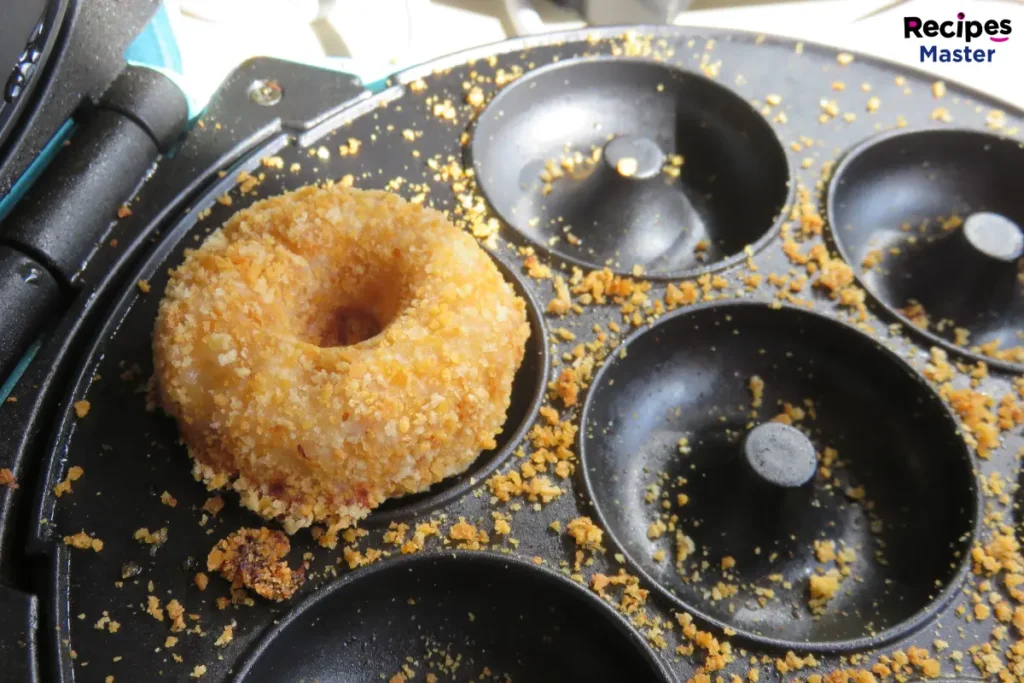
The Dawn of Donut Automation: Unveiling the First Donut Making Machine
In the world of culinary inventions, the first donut making machine stands out as a sweet revolution. This invention changed donut production forever. It also marked a leap in food manufacturing. As we start this journey, imagine the anticipation akin to waiting for a freshly glazed donut.
This exploration will take us back to the early 20th century. We’ll discover the genius behind the machine and see how it changed donut popularity. Get ready to travel back to when innovation met indulgence in the world of donuts.
Setting the Stage: The Culinary World Before Automation
The Handcrafted Era
Before machines, each donut showcased the art of handcrafting. Bakers worldwide would wake early, mixing, kneading, and shaping dough by hand. This time showed the deep bond between bakers and their creations. Despite its beauty, this era faced a challenge. It could not keep up with the growing love for donuts.
The Quest for Efficiency
The rising demand for donuts soon exceeded what hands could produce. Bakers and entrepreneurs shared a goal. They needed a faster way to make donuts without losing their charm. This desire for efficiency sparked innovation. It led to a breakthrough that would bring donuts to the masses.
External Links to Explore Further
- The Sweet History of Donuts – Delve into the donut’s evolution before automation.
- Culinary Innovations: Then and Now – See how technology has reshaped food production through the ages.
- The Art of Baking – Learn about the complexities of traditional baking.
Next, we’ll meet the inventor of the first donut making machine. We’ll see how necessity, creativity, and boldness led to a device that changed the donut world forever.
Adolph Levitt: The Visionary Behind the First Donut Machine (Word Count: 600)
A Baker’s Dilemma
In the heart of New York City, Adolph Levitt, a baker and innovator, faced a pressing challenge. His bakery, loved by many, couldn’t keep up with the ever-growing demand for donuts. Every morning, eager crowds would gather, anticipating the sweet treats that were in short supply. Recognizing the need for a faster solution, Levitt set his sights on revolutionizing donut production.
The Birth of the Doughnut Machine
Then, in 1920, Levitt’s moment of inspiration arrived. He devised and constructed the first-ever automated donut machine. This invention was not merely a piece of equipment; it became an attraction in its own right. Onlookers were fascinated as the machine efficiently produced perfectly shaped donuts at an astonishing rate. Consequently, Levitt’s creation did more than just streamline production; it offered a glimpse into the potential future of food technology.
Rising to Fame
Subsequently, the machine catapulted Levitt’s bakery to fame, making it a city landmark. It attracted a diverse crowd, all united by their fascination with the machine’s seamless operation and the delicious results it produced. As a result, the bakery transformed from a simple place to buy donuts into a destination for both locals and tourists, eager to witness innovation in action.
Transforming the Industry: The Impact of the First Donut Machine
A New Era of Donut Production
With the advent of Levitt’s donut machine, the donut industry was poised at the brink of a new era. For the first time, bakeries could meet the soaring demand for donuts, producing them not only with greater speed but also with consistent quality. This technological marvel didn’t just solve a supply issue; it redefined the possibilities of food production.
The Widespread Popularity of Donuts
Furthermore, as the machine made donuts more accessible, their popularity surged to unprecedented levels. The efficiency of production allowed donuts to become a staple in coffee shops, diners, and bakeries across the nation. Consequently, this accessibility played a crucial role in cementing donuts as a beloved treat in American culture and beyond.
Inspiring Future Innovations
Moreover, the success of the first donut machine sparked a wave of culinary innovation. Entrepreneurs and inventors saw the potential for mechanization in other areas of food production, leading to advancements that continue to shape the industry today. Thus, Levitt’s invention was not just a milestone for donuts but a catalyst for broader technological progress in the culinary world.
Challenges and Adaptations
However, the journey was not without its challenges. As the technology evolved, so did the need for bakers to adapt. The introduction of automated machines required a new set of skills, from machine operation to maintenance. Despite these hurdles, the industry’s willingness to embrace change ensured that donuts remained a dynamic and evolving part of the culinary landscape.
Modern Innovations and the Future of Donut Making
Technological Advancements in Donut Production
Today’s donut production is a testament to the power of innovation, building upon Levitt’s original machine with even more advanced technologies. Current machines offer unparalleled efficiency and precision, capable of producing thousands of donuts per hour. This leap in productivity is complemented by features ensuring consistency in size, shape, and quality, meeting the high standards of modern consumers.
The Role of Digital Technology
Moreover, digital technology has revolutionized the donut industry beyond just production. From sophisticated point-of-sale systems to social media marketing, technology empowers donut shops to reach wider audiences and operate more effectively. Online platforms allow for real-time customer feedback and engagement, fostering a community of donut lovers and driving trends in flavors and designs.
Sustainability and Ethical Considerations
As we look to the future, sustainability and ethical considerations are becoming increasingly important in the donut industry. Innovations in sourcing ingredients, reducing waste, and using eco-friendly packaging are gaining momentum. The industry is moving towards more responsible practices, aligning with global efforts to combat environmental challenges and promote ethical consumption.
Anticipating Future Trends
The future of donut making is ripe with possibilities. From AI-driven flavor innovations to automated customization for individual tastes, the potential for growth and evolution is boundless. As consumer preferences continue to evolve, so too will the methods and technologies used to create donuts, ensuring that this beloved treat remains a staple of culinary innovation.
Nurturing the Next Generation of Donut Makers
Educational Pathways in Culinary Arts
As the donut industry continues to evolve, so too does the need for skilled, innovative donut makers. Culinary schools around the world are responding to this demand by offering specialized programs focused on pastry and baking arts. These programs not only teach the fundamentals of donut making but also incorporate modern techniques and business acumen, preparing students to enter and excel in the competitive landscape of culinary arts.
The Importance of Mentorship and Community
In addition to formal education, the role of mentorship and community cannot be overstated. Seasoned professionals in the field are increasingly offering their expertise to mentor aspiring donut makers, providing guidance, inspiration, and the benefit of experience. Online forums and social media groups also serve as vibrant communities where ideas, challenges, and successes are shared, fostering a supportive environment for innovation and growth.
Embracing Innovation While Honoring Tradition
The future of donut making rests on the delicate balance between embracing technological innovations and honoring the rich traditions of baking. Aspiring donut makers are encouraged to experiment with new flavors, designs, and production methods while remaining grounded in the fundamental principles of quality and craftsmanship. By doing so, they can contribute to the ongoing story of the donut, ensuring its place in both the hearts and diets of future generations.
Sustainability and Ethical Responsibility
Looking ahead, the next generation of donut makers will also need to navigate the increasing expectations around sustainability and ethical responsibility. This includes sourcing ingredients locally, minimizing environmental impact, and engaging in fair labor practices. By integrating these values into their work, new donut makers can lead the industry toward a more sustainable and ethical future.
Frequently Asked Questions (FAQs)
When Was the First Donut Making Machine Invented? The first donut making machine was invented in 1920 by Adolph Levitt, an enterprising refugee from czarist Russia. Levitt's invention revolutionized the way donuts were produced, making it possible to meet the growing demand for this beloved treat. Who Invented the First Donut Making Machine? Adolph Levitt is credited with inventing the first automated donut making machine. His innovative approach to donut production helped transform the donut from a handcrafted specialty into a staple of American culture. How Did the First Donut Making Machine Work? Levitt's donut making machine mechanized the process of shaping and cooking donuts. It dropped rings of dough into hot oil, flipped them to ensure even cooking, and then conveyed the cooked donuts out of the oil to cool. This automation allowed for consistent shape and quality, significantly increasing production speed. What Impact Did the First Donut Making Machine Have on the Industry? The invention of the donut making machine had a profound impact on the industry. It not only increased production efficiency but also popularized donuts across the United States, contributing to their status as a popular snack and breakfast item. The machine's success also inspired further innovations in food production technology. Are Modern Donut Machines Similar to the First One Invented? While modern donut machines have evolved significantly since Levitt's original design, the basic principles remain the same. Today's machines incorporate advanced technology for greater efficiency, precision, and control, but they still automate the process of shaping, cooking, and cooling donuts. Can Small Businesses Afford Modern Donut Machines? Modern donut machines vary widely in size and capacity, making them accessible to businesses of different scales. While the initial investment can be significant, the efficiency and increased production capacity often justify the cost. Many small businesses find that investing in a donut machine is viable and beneficial in the long run. How Have Donut Machines Changed Over the Years? Donut machines have become more sophisticated over the years, incorporating digital controls, customizable settings, and features that ensure consistent quality. Innovations have also made machines more versatile, capable of producing a wider variety of donut styles and sizes to meet diverse consumer preferences.
Related Articles
Enhance your donut-making experience with these insightful articles from RecipesMaster.net, offering tips, recipes, and ideas for sweet and savory treats:
- For those intrigued by the versatility of air frying, Delicious and Nutritious Air Fryer Mushroom Recipes showcases how to create healthy, flavorful dishes with ease.
- Quick and efficient prep is key in any kitchen. How to Cube Sweet Potatoes Fast provides valuable tips for speeding up your cooking process, applicable in a variety of recipes.
- Dive into the simplicity of baking with Easy Cookie Dough Recipe, a guide to making versatile cookie dough that’s perfect for those sudden baking urges.
Conclusion: The Ever-Evolving World of Donut Making
The invention of the first donut making machine by Adolph Levitt marked the beginning of a new era in donut production, setting the stage for a century of innovation, creativity, and cultural significance. Today, as we stand on the brink of new advancements in technology and shifts in consumer values, the journey of the donut continues to inspire.
For aspiring donut makers, the path is rich with opportunities to innovate, to delight, and to make a difference. By embracing the lessons of the past, the tools of the present, and the possibilities of the future, they can contribute to the ongoing evolution of this beloved culinary tradition. The story of the donut is far from complete; it’s an invitation to dream, to create, and to continue the legacy of one of the world’s favorite treats.
